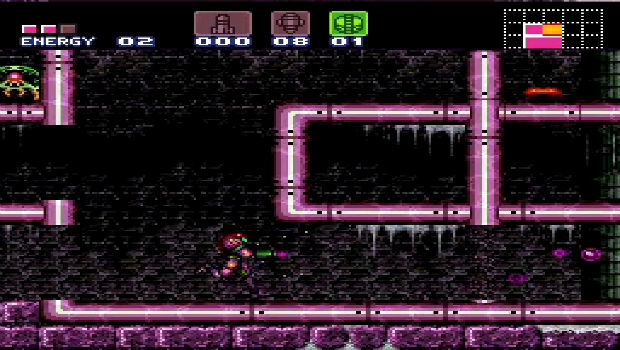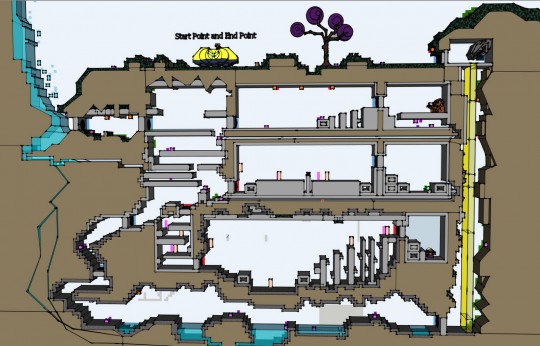Map Quest
Map Quest: Super Metroid
Due to technological constraints, in-game maps were not always possible. Thankfully, we as a society progressed to the point technologically where we could not only include maps in-game, but they could be extremely vibrant, helpful, and easy to read to boot.
With the rise of the Super Nintendo came one of the greatest exploration-centric games of all time. Enter Super Metroid.
We’ve already established that in contemporary gaming culture, internet assistance is generally a given. Of course, back in the 80s and 90s, Gamefaqs and NeoGAF tip threads weren’t readily available. While some retro games tasked you with creating your own maps, as time went on, developers started giving you the proverbial pieces to the puzzle — all you have to do was press the “pause” button.
With new technology came bigger budgets, and more content for games — sometimes in the form of enhanced interface capabilities. Super Metroid for instance was a meatier version of any other Metroid game that came before it — so many pieces of equipment, weapons, and locales needed to come together to form one cohesive gameplay experience. The literal glue that held this all together was the map system. If you take a look at the picture above, you’ll notice that there are different icons on the map — dots denote a hidden item, “S” denotes a save point, and so on. To be blunt, Super Metroid was one of the best map-centric games of all time.
It gave you pretty much everything you needed to keep going, but it didn’t give you everything. You didn’t need to be a certified cartographer to enjoy your time with the game, because everything was so aesthetically pleasing that you could stop and smell the roses without it resulting in frustration. Conveniently, the map also always visible on the top right-hand corner of the screen, meaning you didn’t always have to switch back and forth to the full-screen version. Each specific area of Super Metroid‘s world had a distinct feel to it, which only heightened the spirit of exploration. The Wrecked Ship was my absolute favorite, as the combination of music and stark contrast to the rest of the game’s world made it extremely rewarding to endure.
Power-ups also added a whole new perspective to exploration in video games. This isn’t like previous Zelda, where items would mainly only be used in one area, only to be relegated back to your inventory. There were six different kind of beams, two extra suits, and eleven ancillary items to aid in your quest. One of the coolest items was the X-Ray scope, which allowed you to see through hidden walls and spy completely new areas. Once you obtained it, it changed the way you reviewed the entire game. From then on, nothing was finite — every wall or ceiling could be a false representation, or a trick.
Super Metroid was also one of the earliest examples of a game that contained sequence breaking. Sequence breaking is essentially the ability to earn various power-ups or abilities (or collectibles) before you are “supposed to.” Using different techniques like the infinite ball bomb, you could access areas that otherwise wouldn’t be possible. Most of the time you were eventually met with a spikewall that utterly stopped any potential progress until you came back with the required item, but in many instances, you could go nearly anywhere you wanted.
Sequence breaking is basically eliminated from the contemporary market, and modern instances of the mechanic are commonly referred to as “bugs” or “exploits.” Although there are many contentions in regards to the efficacy of sequence breaking, I happened to really enjoy it, as it heavily encourages the spirit of exploration.
To this day, Super Metroid remains one of my favorite games of all time for many reasons. Not only was the map system extremely convenient and user friendly, but it was aided by extremely novel gameplay concepts, and a true sense of exploration.


